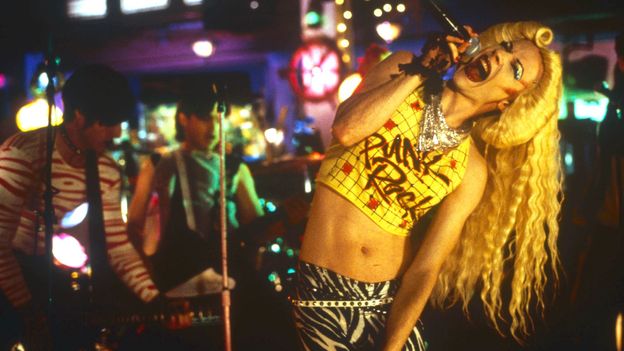The story that made couples break up


The film was inarguably ahead of its time and able to make distinctions between gender, sexuality and drag in ways that mainstream culture is only now catching up with. For Diversity and LGBT inclusion specialist Yassine Senghor, the power of Hedwig is how it taps into the difficulty of defining yourself when no one label fits. “The film is not necessarily specifically depicting what the journey is like for everybody, it is very personal to Hedwig, but I think it highlights that confusion of when you’re in a space where there isn’t necessarily language to define yourself.” That is distinct from the drag that Hedwig performs, but Senghor thinks that the power of drag is also at the fore. “It highlights that drag is not necessarily an exploration of identity but has the power to subvert gender ideas, to poke fun of them and question the status quo.”
Shifting identities
Of course, as times change and the world progresses, drag and gender non-conformity has become much more accepted; but certain elements of Hedwig have become more controversial. Lillian Crawford, a culture writer whose podcast and newsletter Listen to Lillian explore representations of gender in British film, watched the film recently and while she found plenty to admire (“the songs are so good!”), other elements sat less comfortably. “There’s this sinister almost fetishisation of her body by the GI who finds her and also her mother, which sort of buys into the thesis that trans people are only trans because their parents wished that they were another gender when they were born. Trans representation before and since [the film] has focused on kind of a traumatic event that makes you trans.” (The film implies Hedwig was abused by their father as a child.)
But for its creators, Hedwig isn’t a trans story. “I can say almost certainly we never used the word trans while writing,” explains Trask. We were telling the story of a person and we were interested in dualities in general and the gender duality was one of them, but it was just part of what made Hedwig.” Hedwig, back when they are Hansel, is seen exploring gender before being coerced into the surgery and when, later in the film, Hedwig sings Wig in a Box they are empowered by feminine expression, but the film ends on Midnight Radio where Hedwig finds strength and self-acceptance by stripping away all the artifice. “The drag is removed at the end,” says Mitchell. “The character’s now naked saying, ‘OK, this is me, call me what you want… Meet my gender of one, I will no longer be labelled’.” Reflecting on the way Hedwig has aged, he adds: “In terms of gender, things have definitely changed for the better. I’ve never been a much of a label person, but I know it’s very important when you’re young. It was very important for me to come out, it’s very important to say what you are and then as you get older, you forget what you are. You can barely remember your phone number but occasionally you’re reminded that these categories are important to people.”
When Trask was writing Hedwig, he wanted to explore the fallacy of the gender binary. “When I was writing Tear Me Down, I was very interested in using the Berlin Wall metaphor. The song names these different binary dualities like man/woman, top/bottom, slavery/freedom, communist/capitalist. In the post-wall period, there was this genuine searching among countries who could no longer define themselves as being aligned with Russia or aligned with the US. Who are we without this wall? I was trying to say there isn’t much of a difference between a bridge and a wall, they’re both human constructions. The Berlin Wall was the same way that gender is – the division between men and women and what that signifies for who people are as people is a human construction. We’re taught to believe that gender is immutable but it can come down.”








